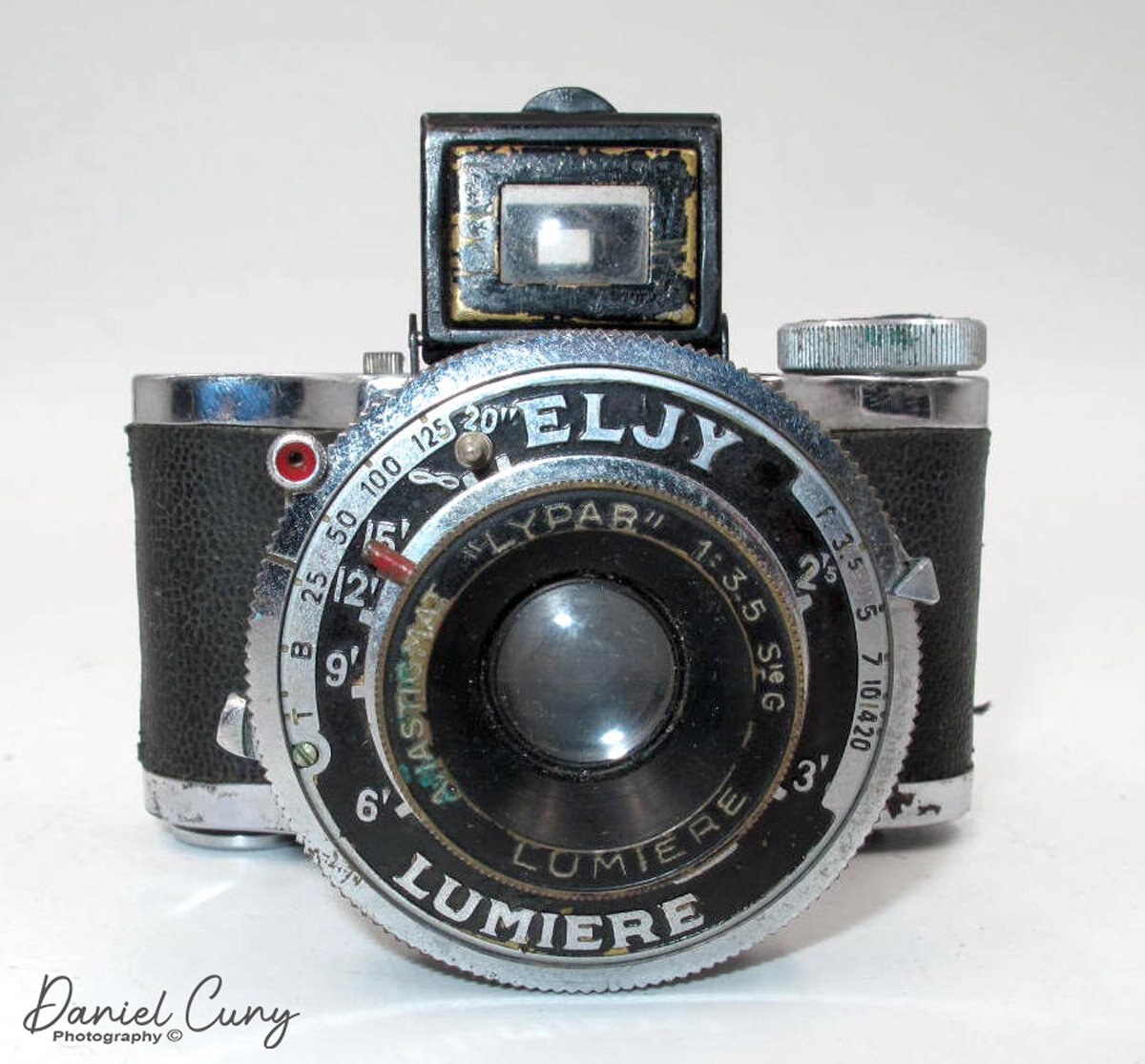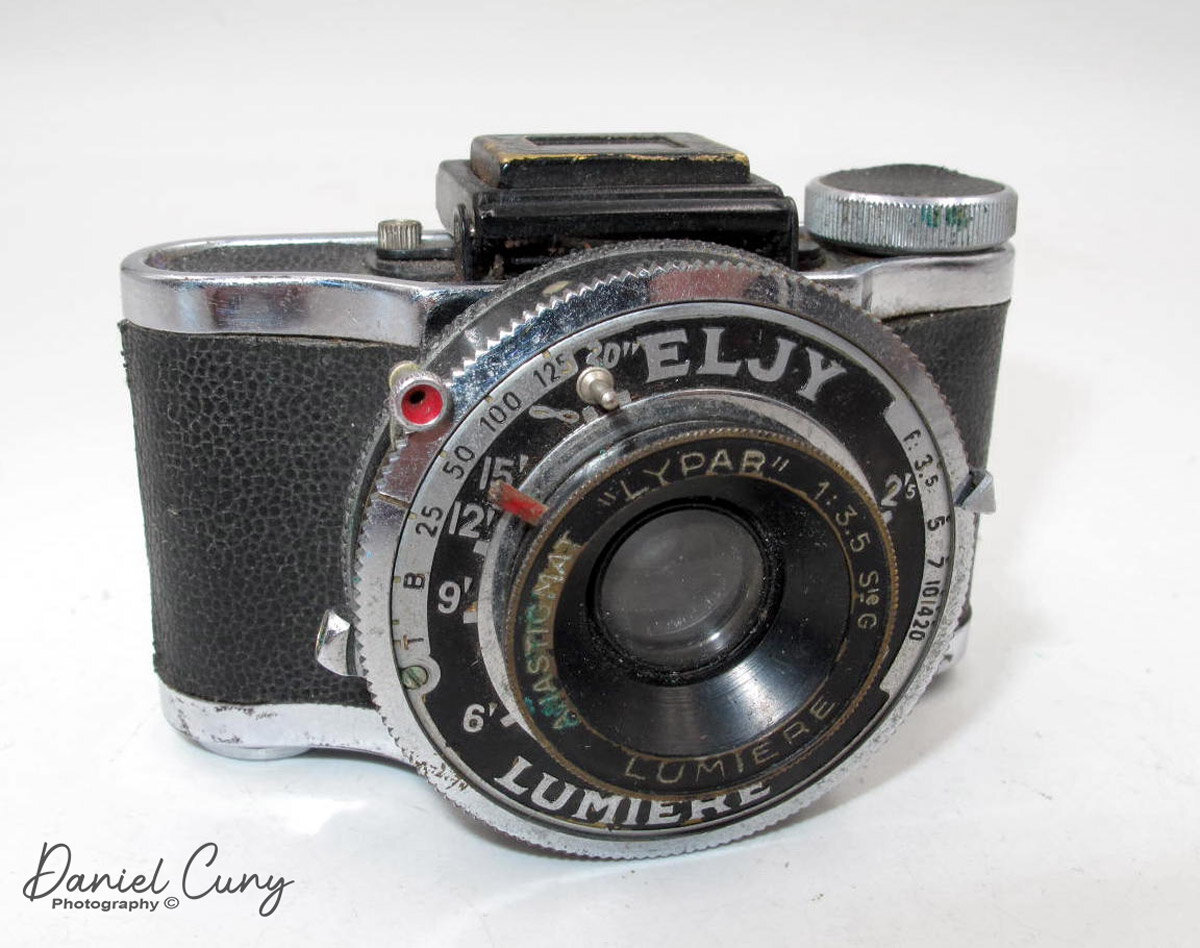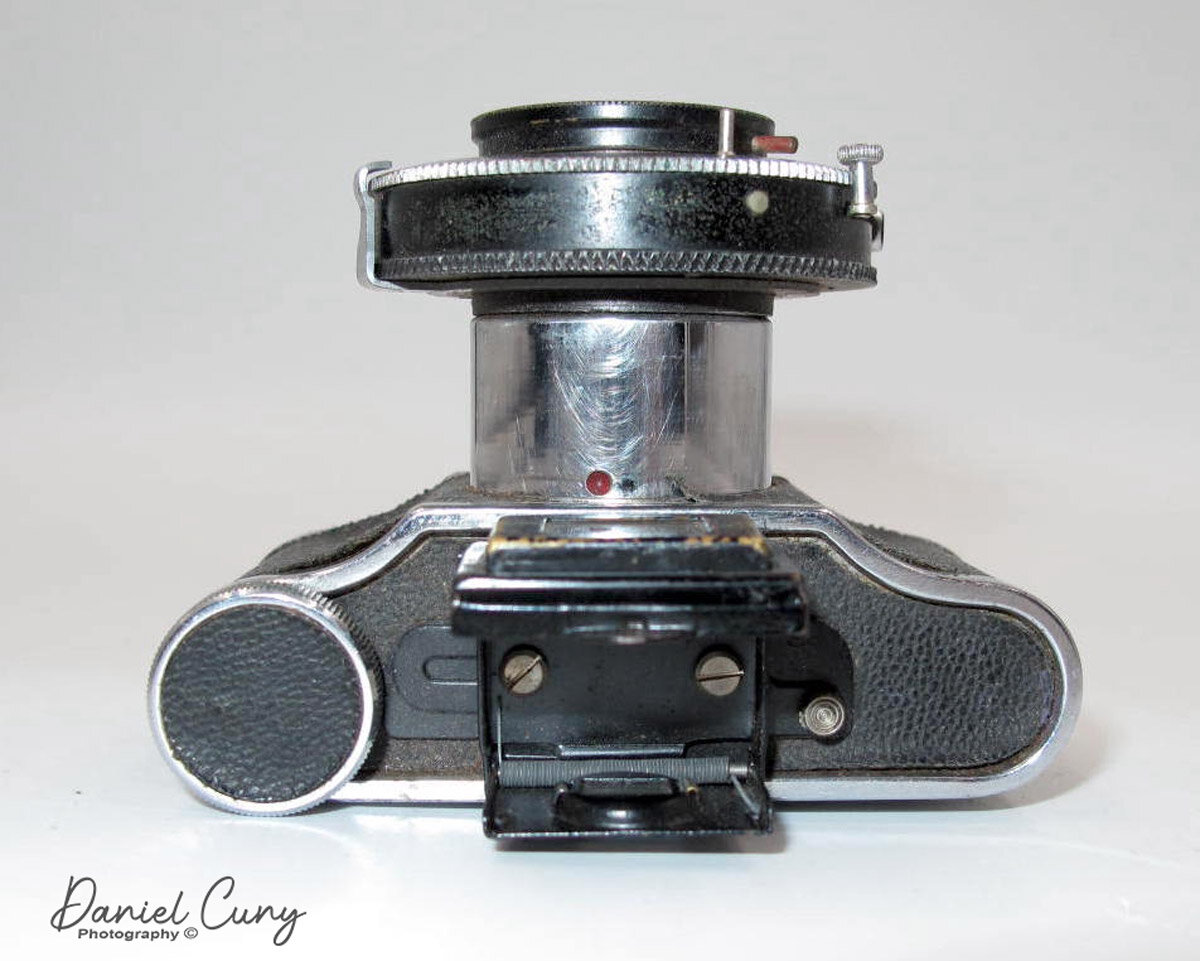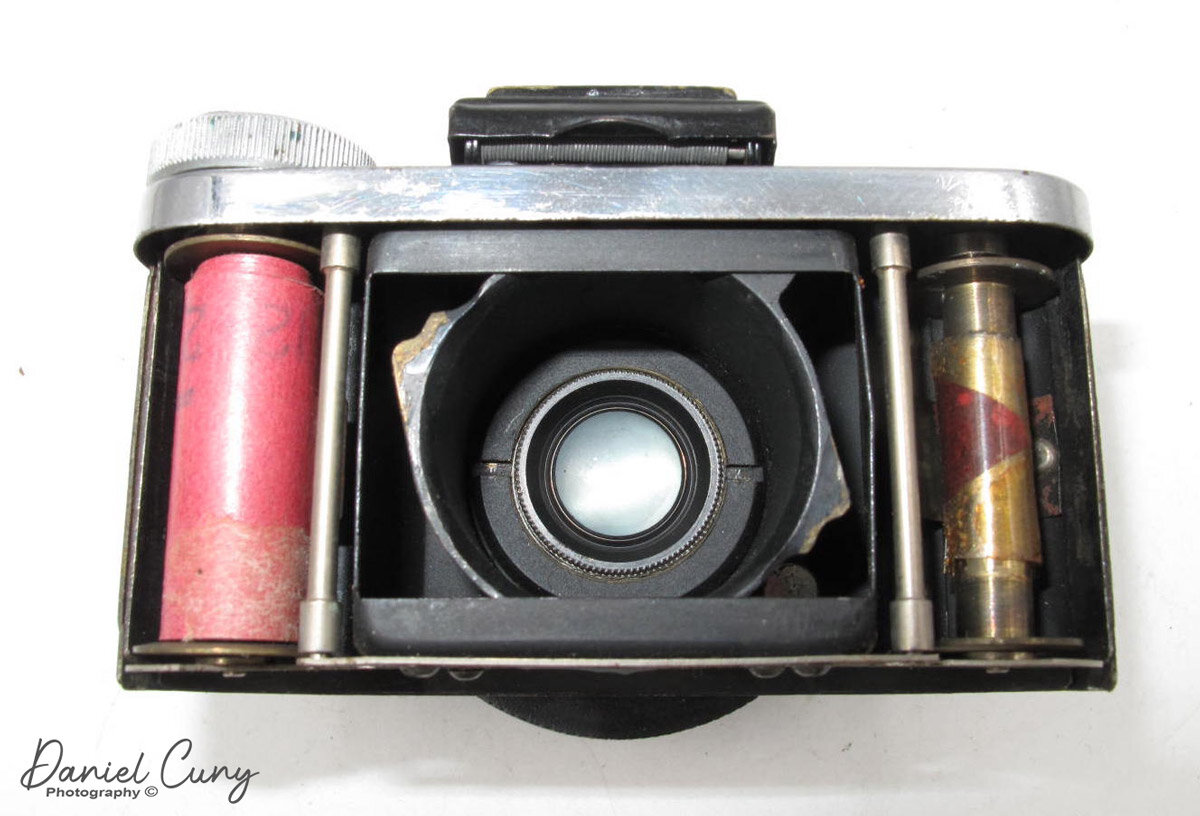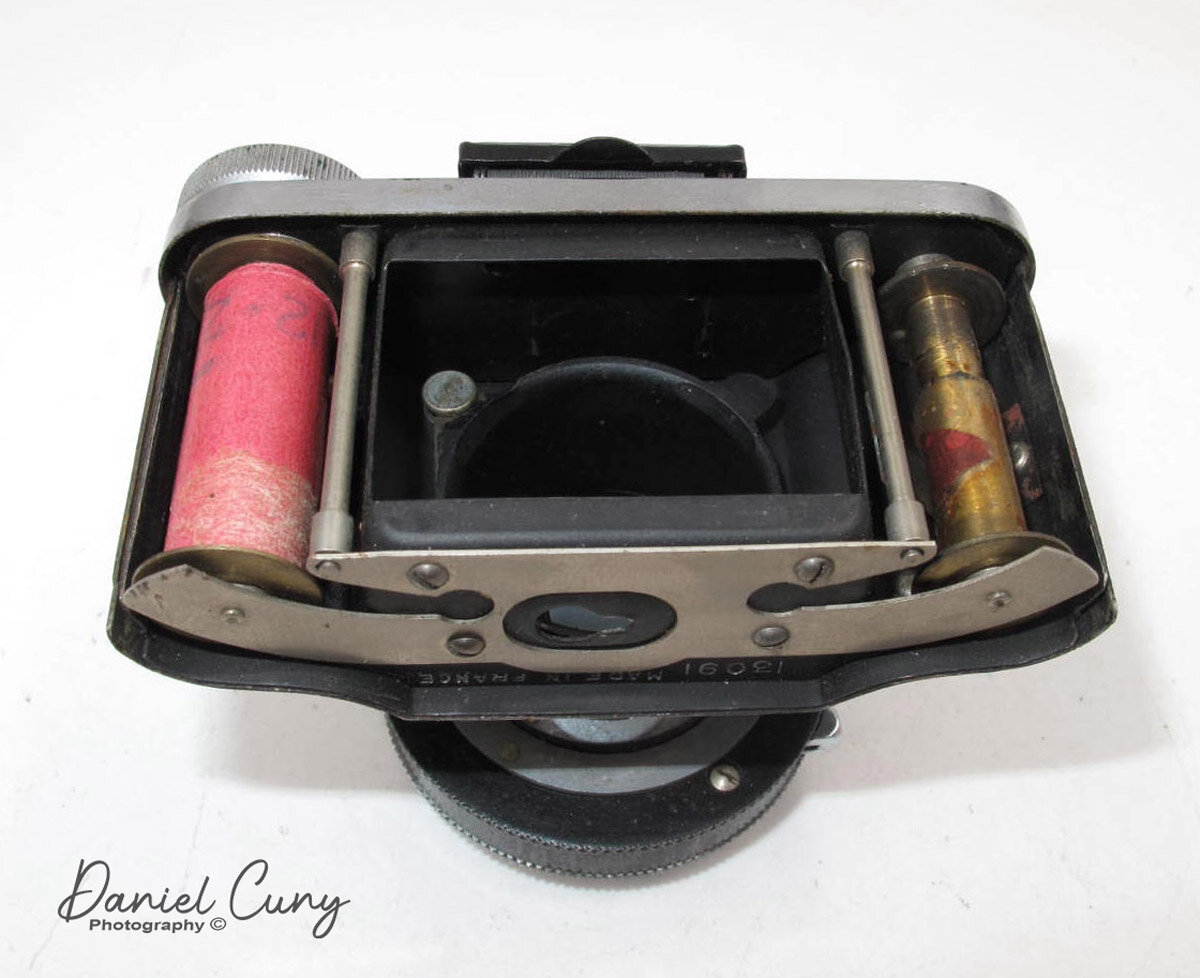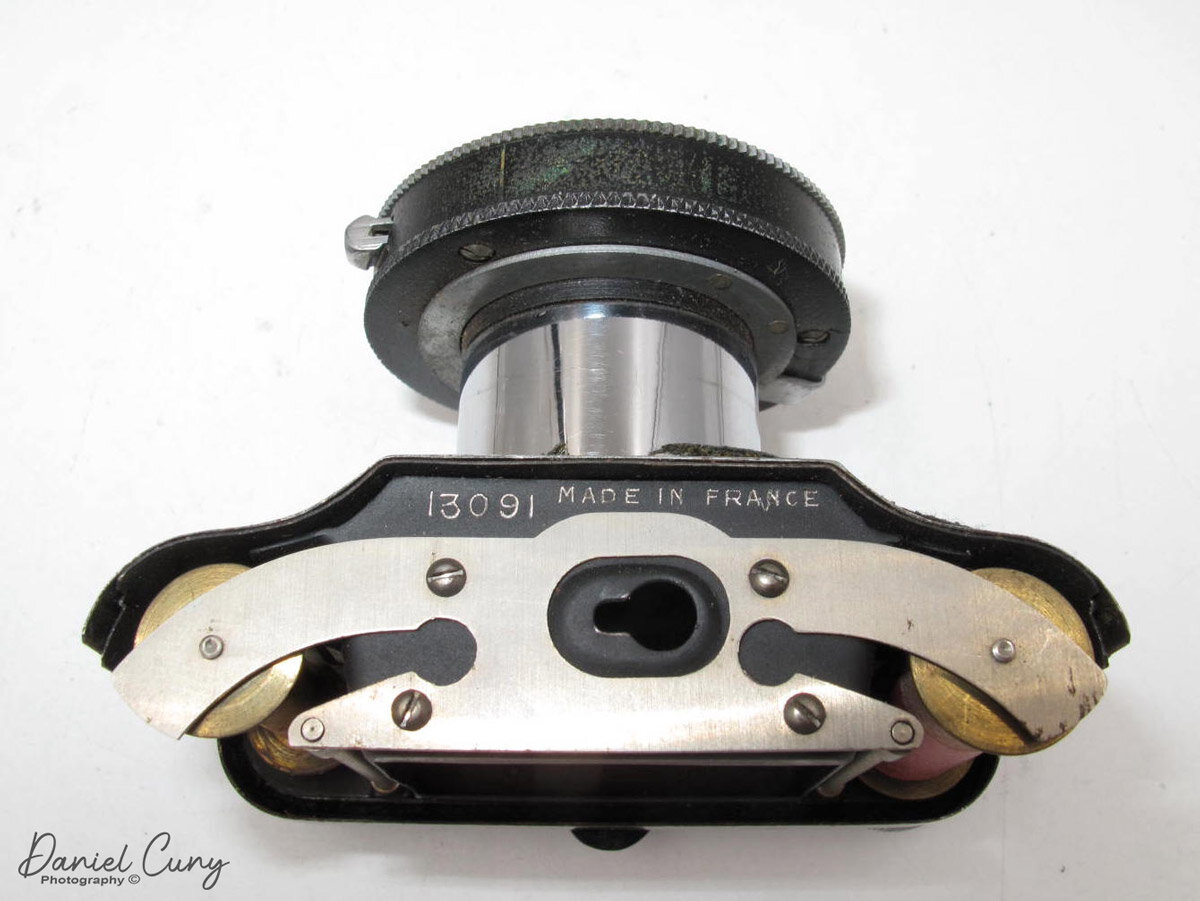Looking through many of McKeown's Camera Guides, which is the Bible of all camera collecting books, the Lumiere ELJY camera is one camera that always caught my eye. I believe it has to do with the size proportion of the lens to the camera body that caught my eye. The much larger proportion the lens has compared to the camera body reminds me of the Leica Dial-set Compur cameras of the mid-1920s.
My Lumiere Super ELJY camera.
The Company
The Lumiere company is a French company founded in 1893 by Charles Antoine Lumière, which started out as a film manufacturer and is most well known in the cinematography world. Charles's sons, Auguste and Louis Lumière, were the first to make a mark in the cinema world. The two produced short films starting in 1895 and what is now know as modern kind of movies.
In 1903, they invented a new photographic patent that was a successful color process for a film that lasted for years. They began to produce the Autochrome, a black & white plate but combined 3 color filters to create a color image that continued until the 1930s. They then started making sheet and roll film using the same process.
Lumiere started producing cameras in the 1920s through 1961 with all different cameras, including plate, folding, 35mm in different styles, colors, and shapes. Doing research on the blog and looking at all the different cameras Lumiere produced, I recognized a few other cameras in my collection. For this post, I'm just going to focus on the ELJY camera.
My Camera
There are many different models of the ELJY camera with versions and upgrades to the camera. The ELJY model that I own and am talking about is the Super ELJY, type 3. If you're interested in seeing the different models and variations, you can see them here (http://corsopolaris.net/supercameras/eljy/eljy.html). Personally, I didn't realize there were so many. The ELJY was produced between 1937-1960.
The Super ELJY camera is a ruggedly built camera with a pull-out lens similar to the modern-day Rollei 35 cameras. To put the lens in the position to take a photo, you rotate the lens clockwise and pull the lens away from the camera body. The lens is on a very sturdy chrome barrel. Once extended, you turn the lens counterclockwise to lock the lens into position, and the lens won't slide back into the camera body.
While the image size is 23x35mm, which is almost the same as 35mm, the camera takes a paperback roll film which is more similar to 127 or 120 films than 35mm. Some people say this is the "large format" miniature camera due to the camera and film size. The camera is more significant than the subminiature cameras that I have but considerably smaller than the 35mm camera, even the previously mentioned Rollei 35.
The camera is just over 3" wide by 2" tall without the finder up; with the finder up, it's 2.5" tall, and the camera is 1.75" deep with the lens retracted, or 2.25" with the lens extended. The lens is a Lypar 40mm f3.5 lens with aperture settings going to f20. It's odd because the aperture settings are 3.5,5,7,10,14 & 20. The shutter speeds go from "T" for time exposure, "B," 25, 50, 100, 125. The focus range is from 0.5m to Infinity.
The camera has a simple pivoted, two-blade shutter which there is no cocking; just press the shutter release to take a photo, and there is a place for a cable release for the longer exposures. To open the back, the back door locking lever is on the bottom of the camera. The entire back comes off the camera to load and replace the film. There is also a tripod socket on the bottom of the camera. The red window on the back of the camera used to count exposures has a sliding door to open to view the film numbers.
On the top of the camera is the winding lever to advance the film. There is also a pop-up viewfinder. There is also a lever to slide out next to the viewfinder to correct for parallax when focusing close. When I first opened the camera, I noticed an exposed roll of film still in the camera. I'm going to have to find a way to process the film to see what treasures are on the film.
Thank you for taking a few minutes out of your busy schedule to read my blog. It's very much appreciated, and I would love to hear from you. One of the great joys of writing this article is hearing from people. Many tell me about their camera collection, which I enjoy hearing about. Until next time, please be safe.

